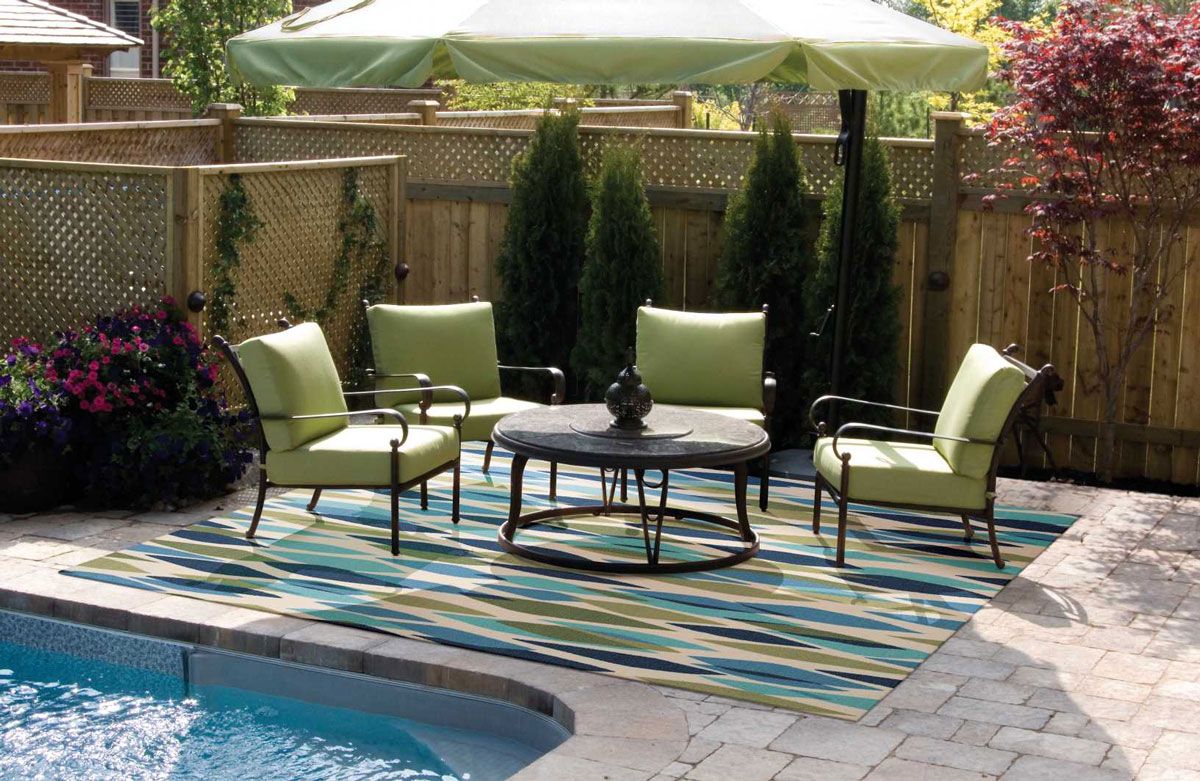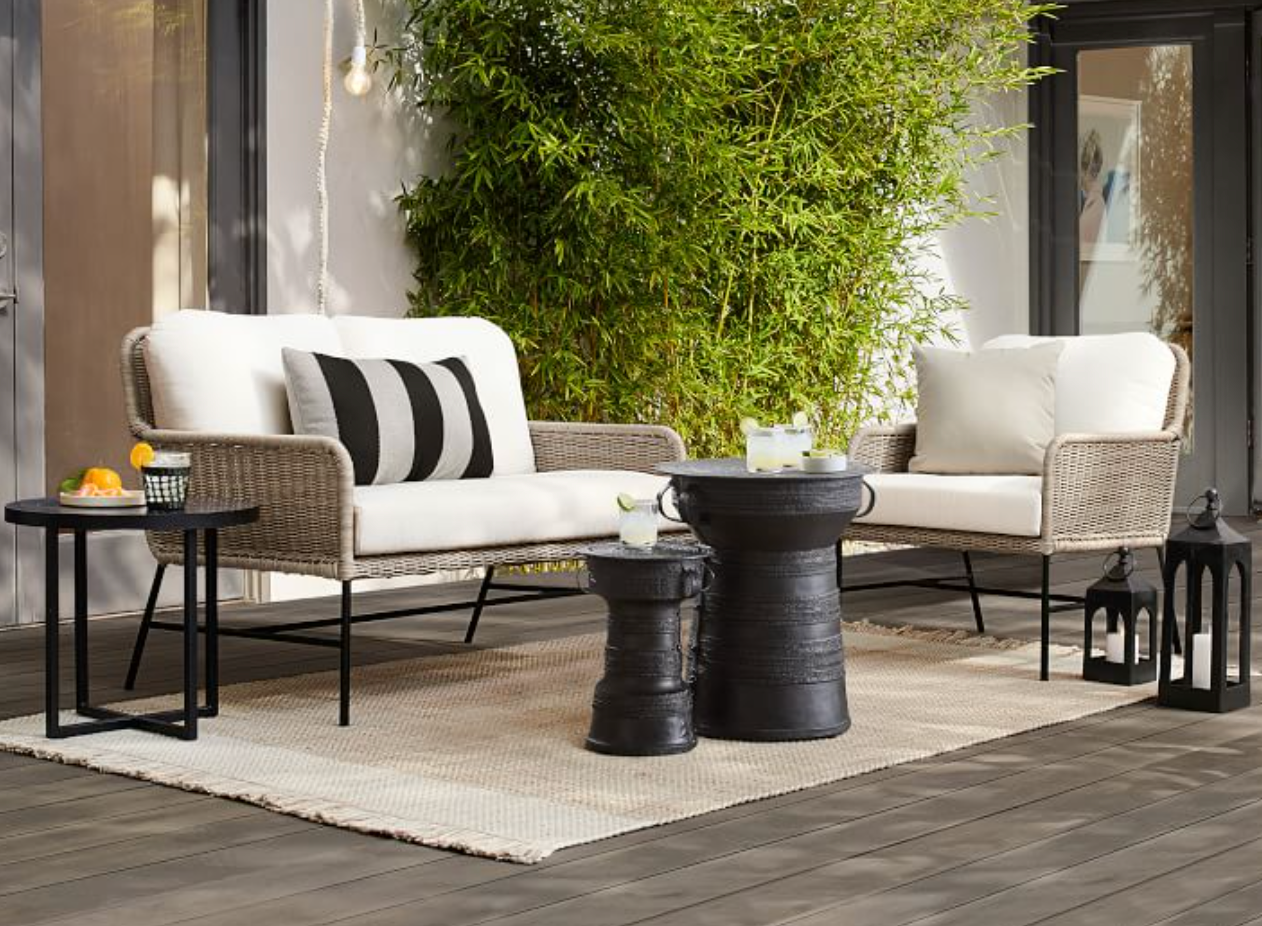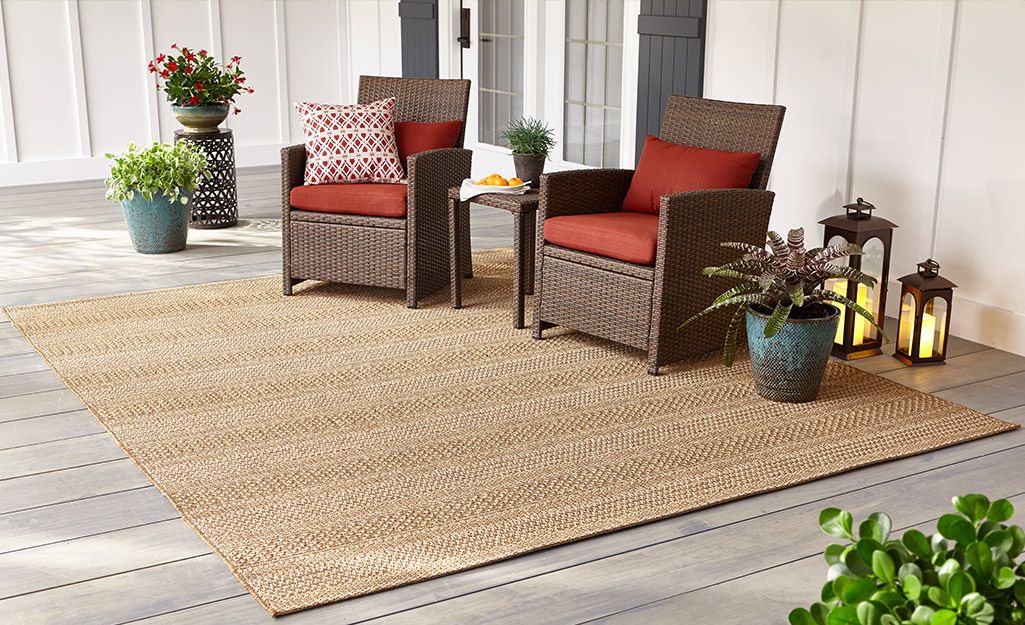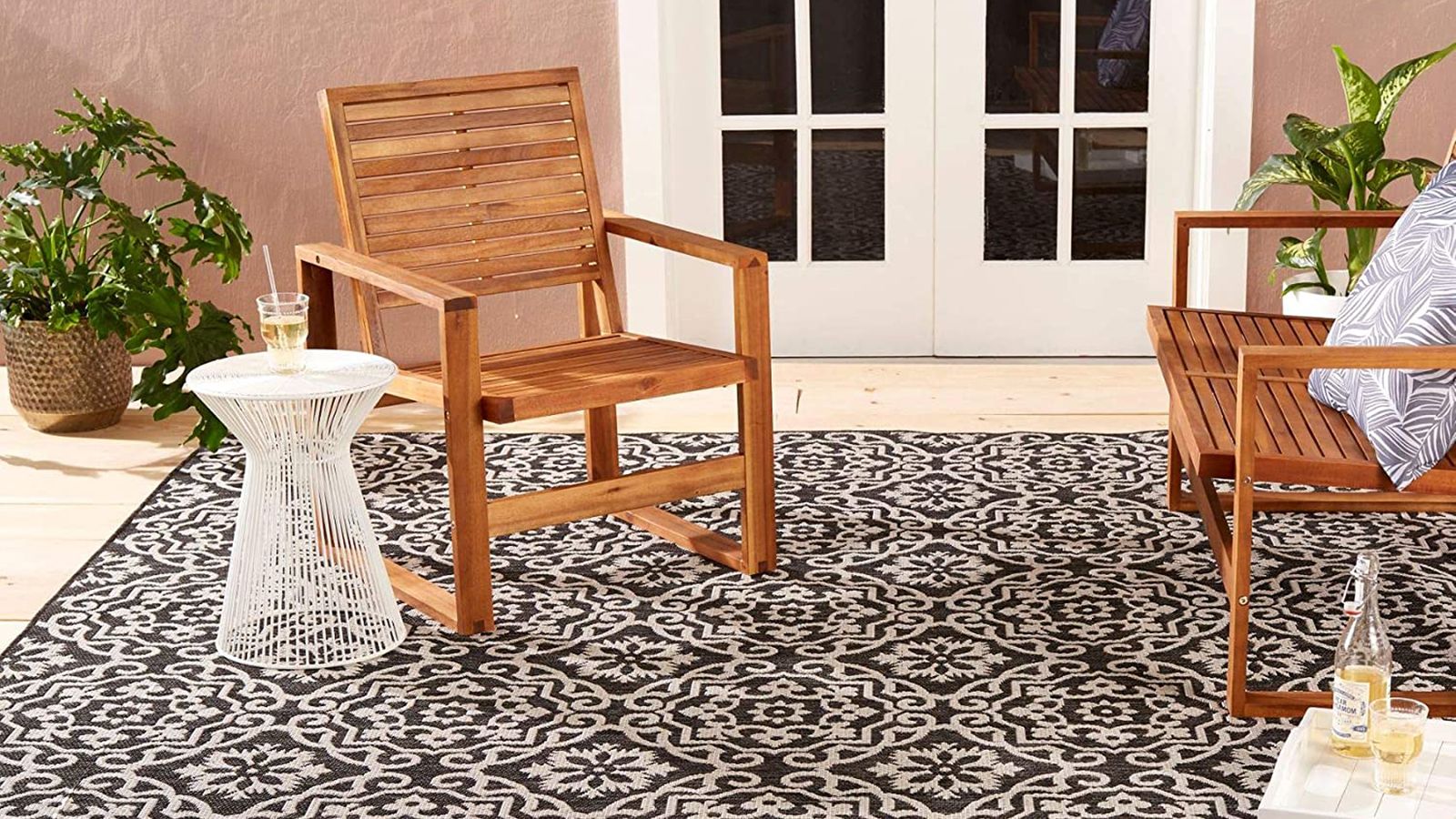How to Choose the Right Outdoor Rug: Bring Indoor Coziness to Your Patio or Porch
Bringing the indoors out is nothing new. This trend has been popular for a quite long and it seems that more and more people are enjoying it. The simple idea of being outdoors while feeling the same comfort a living room can offer is priceless. But besides the use of an amazing furniture seating set, coffee table and other adorning accessories, you shouldn't forget about the rug. An outdoor rug is an accessory that has the ability to add warmth, and there is no better time to use it than now when creating a comfortable and appealing outdoor gathering area.

What Makes Them so Special?
Creating a comfortable, stylish and appealing outdoor area is impossible without the use of outdoor rugs. Being made of different and sturdier materials than indoor rugs, outdoor rugs are durable and easier to clean which is another reason for their use. Except for this, these rugs are mainly waterproof meaning that you won’t have to remove them when it's raining outside. The ones made of high-quality materials can withstand rain which explains the need to simply wash them with a hose. This means that in no time you’ll have a clean and dry rug. These rugs can also be used around a pool, so you could feel safer when walking around it once out of the water. However, you should know that when used like that, the rug might deteriorate faster because pool water contains disinfectant products like chlorine, bromine, ozone, etc., that can damage the rugs’ fibres. Now, before making any rash decision, instead of instantly buying the first rug you see in the store, first, you have to take into account some important things.
Think of the Surface Placement
While the look of the rug is quite important, you shall not forget about the surface on which you plan to place the rug. For instance, if planning to place it over concrete, you should look for a rug that allows moisture to evaporate. Otherwise, you risk dealing with mould and mildew.

When thinking of placing the rug over porcelain and ceramic tiles, make sure they are carefully sealed in order to avoid mould and mildew growth. Once again, choose a rug that is made of a breathable type of fabric. In case you plan to place the rug over metal flooring, you should consider the idea of adding click-lock tiles underneath the rug area. This is paramount if you want to prevent floor rust and corrosion.
For wood floors, it’s recommended to choose a breathable and non-absorbent rug for outdoor use. Such rugs are usually made of synthetic materials like polyester. Either way, after rain, the rug can stay wet for a short period of time which can still cause damage to the floor. So, you either have to clean the wood floor after each rain, or you’ll have to remove the rug before raining.
The Most Commonly Used Materials
Synthetic Fibres
Except for the well-known polyester, nowadays you can also choose a rug made of polypropylene or also known as olefin. This material is made of plastic that is breathable and moisture-wicking. Rugs made of this material are usually stain and fade-resistant.

Besides polypropylene, you can also choose fabrics made of acrylic and nylon. The thing you should know about these or any other synthetic rugs is that some manufacturers usually use a blend of synthetic and natural fibres in order to make the rugs look warmer and homier. Unfortunately, this makes them prone to bacteria, odour, mould and mildew, so better think twice and do deeper research before making the purchase.
Natural Fibres
No matter their existence and no matter how tempting it could be, the truth is that rugs made of natural fibre are not proper to be used outside. Whether talking about cotton, jute, seagrass or sisal, all of these fabrics are prone to mould and mildew when exposed to rain. However, if you still want to invest in one because it looks extremely appealing, then it’s recommended to air dry it regularly in order to promote air circulation.

Determine Its Size
How and where you plan to use the rug is closely related to the size you need to choose. For instance, if you plan to use the rug as a base and place it underneath the coffee table and seating furniture, then you should choose a larger rug for the designated area. Generally speaking, designers recommend leaving around 15cm of free rug space on all sides of the outdoor furniture in order to avoid accidents when walking around it or when moving a chair. In case you want something smaller, it’s better if you choose a rug that will cover the area under the coffee table or one that goes under the two front legs of the sofa/chairs.


